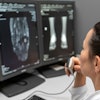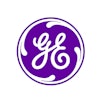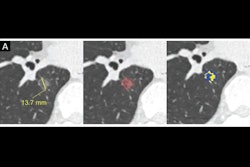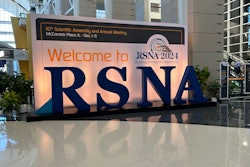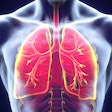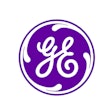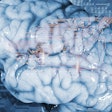An open-source, deep-learning (DL) model called Sybil performs well when it comes to predicting lung cancer risk among heavy-smoking populations, according to a study published August 5 in Radiology.
The findings could help tailor lung cancer screening follow-up, wrote a team led by Jong Hyuk Lee, MD, PhD, of Seoul National University Hospital in South Korea.
"Sybil … demonstrated potential for future lung cancer prediction among Asian individuals with heavy smoking histories of at least 20 pack-years and may support optimization of follow-up intervals," the group noted.
In East Asia, opportunistic low-dose CT (LDCT) screening is a common practice, the researchers explained, "driven by the proactive health-seeking behavior of individuals" -- a trend that translates to the acquisition of LDCT scans regardless of smoking status. Sybil is an open-source, deep-learning model that uses LDCT data for lung cancer prediction, and the combination of the algorithm with a "unique clinical context offers a valuable opportunity to assess the applicability and performance of Sybil in populations underrepresented in traditional screening frameworks," Lee and colleagues wrote.
However, Sybil does need external testing to confirm its generalizability and performance in individuals at high risk of lung cancer who never smoked or have light smoking histories.
The investigators conducted a study to test Sybil's ability to identify individuals at high risk for lung cancer within an Asian cohort. They analyzed LDCT scans taken between January 2004 and December 2021 from 18,057 patients; all patients had at least one follow-up scan. The group assessed Sybil's performance for estimating lung cancer risk over a six-year period using the area under the receiver operating characteristic curve (AUC).
Ninety-two study participants (0.5%) were diagnosed with lung cancer within six years. Of the total cohort, 2,848 had heavy smoking histories (at least 20 pack-years) and 9,943 had never- or light smoking histories (median, two pack-years); 24 (0.8%) and 41 (0.4%) lung cancers were diagnosed in these two categories, respectively.
The group reported the following:
Sybil's AUC performance for predicting lung cancer risk | ||
AUC | 1-year risk | 6-year risk |
| Overall | 0.91 | 0.74 |
| Heavy-smoking subgroup | 0.94 (for visible lung cancers) | 0.7 (for future lung cancers) |
| Never- or light-smoking subgroup | 0.89 (for visible lung cancers) | 0.56 (for future lung cancers) |
"Sybil demonstrated excellent discriminative performance for visible lung cancers and acceptable performance for future lung cancers in Asian individuals with heavy smoking history but demonstrated poor performance for future lung cancers in a never- or light-smoking subgroup," the researchers wrote.
 Examples of Sybil, an open-source deep learning model, correctly predicting lung cancers (visible lung cancer at baseline CT). (A) Axial low-dose CT image of the lungs in a 54-year-old heavy-smoking man shows a 1.5-cm subsolid nodule in the right lower lobe, with the (B) attention map focusing on this area (arrow). The Sybil lung risk scores were 13.1% for 1-year risk, 20.2% for 2-year risk, 20.7% for 3-year risk, 23.6% for 4-year risk, 24.8% for 5-year risk, and 31.2% for 6-year risk. (C) Axial CT image after two years shows that the subsolid nodule had grown to 2 cm and was subsequently diagnosed as adenocarcinoma (arrow). The Sybil lung risk score is a deep learning-based risk score for predicting future lung cancer risk within 6 years from a low-dose chest CT scan.Radiology and Jong Hyuk Lee, MD, PhD.
Examples of Sybil, an open-source deep learning model, correctly predicting lung cancers (visible lung cancer at baseline CT). (A) Axial low-dose CT image of the lungs in a 54-year-old heavy-smoking man shows a 1.5-cm subsolid nodule in the right lower lobe, with the (B) attention map focusing on this area (arrow). The Sybil lung risk scores were 13.1% for 1-year risk, 20.2% for 2-year risk, 20.7% for 3-year risk, 23.6% for 4-year risk, 24.8% for 5-year risk, and 31.2% for 6-year risk. (C) Axial CT image after two years shows that the subsolid nodule had grown to 2 cm and was subsequently diagnosed as adenocarcinoma (arrow). The Sybil lung risk score is a deep learning-based risk score for predicting future lung cancer risk within 6 years from a low-dose chest CT scan.Radiology and Jong Hyuk Lee, MD, PhD.
Ongoing research in targeted populations will add to the "growing evidence and validation of this novel tool," wrote Francine Jacobson, MD, and Suzanne Byrne, MD, both of Brigham and Women's Hospital in Boston, in an accompanying commentary.
"Ultimately, meta-analyses should be performed wherein AI may offer more nuanced, individualized care as understanding of as-yet-unknown risk factors and genetics at population and individual levels reveal to new inputs for AI that would not be possible for the radiologist or clinician to provide," the two concluded.
The complete study can be found here.

